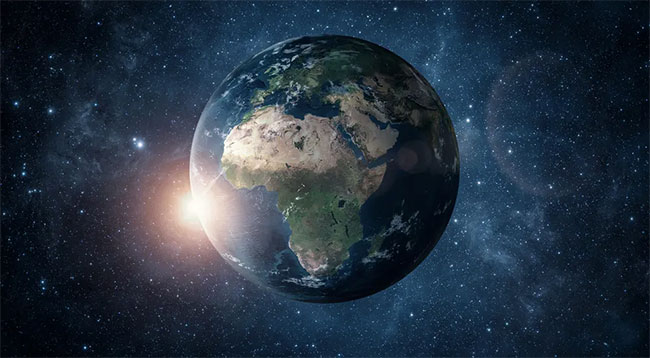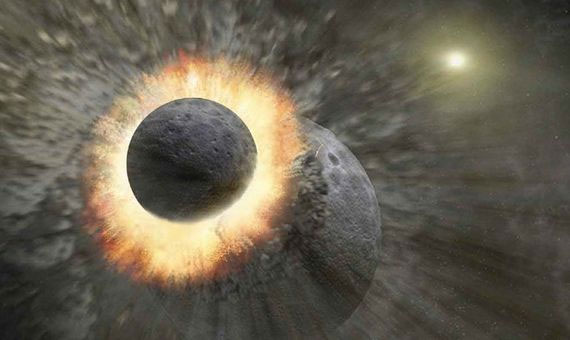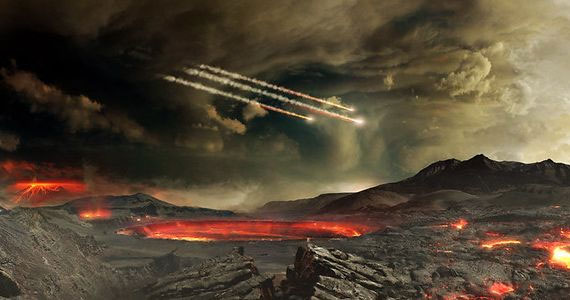The existence of Earth is akin to winning the lottery due to countless coincidences occurring simultaneously.
We tend to accept that human life in the universe is a natural phenomenon. Why does humanity exist on Earth while Venus, Jupiter, Saturn, and others do not (or at least we have not discovered any)? If we are here, why are there no others, or similar beings to humans on other planets out there?
Many physicists and astronomers agree with the notion that there is nothing special about our galaxy or Earth. Our presence here may simply be the result of a series of fortunate events, akin to the universe’s lottery prize that many other planets missed out on at some point in their history.
5 Factors That Shape Earth
To date, many scientists agree on the conclusion that the existence of life on Earth is based on 5 main pillars: the distance from the Sun is neither too close nor too far, just right for water to exist in a liquid state; there is a magnetic core that protects the atmosphere from solar wind and life from cosmic radiation; there is an atmosphere with a greenhouse effect that prevents water from freezing; there is water as a universal solvent for life; and lastly, there is oxygen that allows us to breathe.

Life on Earth is based on 5 main pillars. (Illustrative image).
However, unlike a recipe, these components are not entirely independent of each other. Just like in the process of preparing any dish, only when they are combined in the right order and cooked properly do we achieve the result of humanity being present here today.
A Major Collision Originated Our Planet
About 4.568 billion years ago, in a corner of the galaxy, a cloud of gas and dust formed a new star surrounded by a protoplanetary disk. Its material began to coalesce with increasing mass. Within a few million years, the Solar System formed to resemble what it is today, but between Venus and Mars, there was not one planet but two.
According to the most widely accepted hypothesis, the subsequent collision between primordial Earth and Theia, another object the size of Mars, created Earth and our Moon about 4.51 billion years ago. These figures are obtained by studying the isotopic ratios of elements like lead, produced by the radioactive decay of uranium over billions of years.

The collision between primordial Earth and Theia created Earth and our Moon. (Illustrative image)
By sheer coincidence, this new planet, still hot and glowing, lay within the range that scientists refer to as the Goldilocks zone, much like the “just right” porridge in the fairy tale: far enough from the Sun to avoid freezing as it cooled, thus allowing liquid water to exist. Conversely, this also depended on the planet’s mass and a sufficiently thick and dense atmosphere to create a greenhouse effect, albeit not a strong one. Venus is a prime example of how an overly strong greenhouse effect can turn a planet into a burning hell.
Moreover, the persistence of this atmosphere is supported by a magnetic field generated by a molten metal core that is in motion. It acts like a giant generator. Our neighboring planet, Mars, is an example of the lack of a magnetic shield to protect the planet from solar wind attacks. As Mars’ core cooled, its magnetism faded, and its atmosphere disappeared.
Water – The Source of Life on Land
However, for all the above to progress, we first need the presence of water. Previously, it was believed that early Earth was a dry, fiery ball and that water arrived with asteroids and comets crashing down. However, recent studies suggest that, despite the contributions from these potential impacts, most of the water on Earth may have actually formed from hydrogen and oxygen present in the planet’s own tectonic blocks.
Thus, around 4.4 billion years ago, we had a nearly habitable Earth, covered by a global ocean. But 3.9 billion years ago, a fierce bombardment of asteroids nullified all initial efforts for life. Although this hypothesis has recently been challenged by evidence indicating that Earth was cooling rapidly. By about 3.4 billion years ago, water had reached a comfortable temperature of around 40°C. Geological evidence indicates that land-based bacteria were present around 3.8 billion years ago, but perhaps the earliest living organisms can be traced back even further, almost simultaneously with the formation of the oceans, before the major collision occurred.
Oxygen – From Poison to Antidote
The emergence and evolution of early life is a field that science will debate for a long time because the clues are still incomplete. The first single-celled organisms lived in an unbreathable atmosphere due to gases like methane and ammonia. About 2.4 billion years ago, the so-called Great Oxygen Event occurred, when the atmosphere began to fill with breathable molecular oxygen. However, a comparative molecular analysis concluded that these appeared after the Great Oxidation Event, leaving the emergence of breathable oxygen for other, even more primitive bacteria.

Oxygen was both the cause of life’s emergence and the reason for extinction on Earth. (Illustrative image).
However, the very cause that complicated the emergence of life may also have been responsible for the first mass extinction on Earth, as oxygen was toxic to other early living organisms. In turn, the reaction of oxygen with methane consumed this powerful greenhouse gas and produced water and carbon dioxide, leading to significant climate changes. As a result, Earth was then covered in ice for 300 million years.
Therefore, oxygen was the primary cause of the first extinction on Earth, but at the same time, it was also the engine of new life, a turning point in the evolutionary process that would give rise to multicellular organisms and the explosion of life as we know it today. The reasons for the emergence of life on our planet are incredibly diverse and complex, like a “cosmic lottery”, in which, at least according to what we know, only a single jackpot has been awarded.



















































